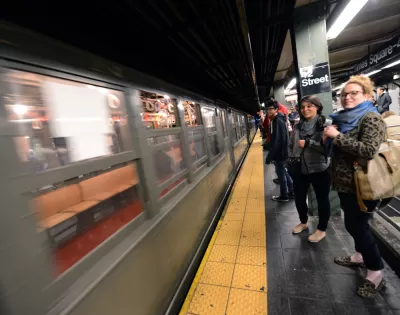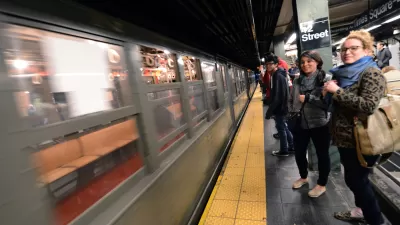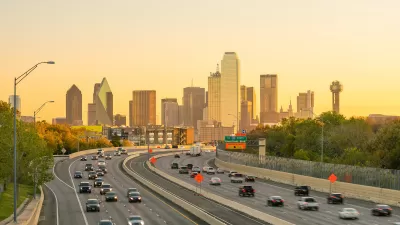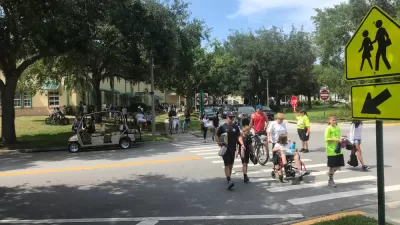Transit in general, and buses in particular, are losing riders, especially during off peak hours. Car pooling is down sharply as well.

From 1996 to 2014 public transit ridership in the United States increased more or less steadily, with much of that growth coming from gains in New York subway ridership. Now that trend is over, and transit ridership is on the decline. This decline has taken place even as the country's population has increased, meaning that the per capita declines are even more pronounced.
"What I argue here is that what we’re seeing now is unquestionably a decline in transit ridership—almost universal among large cities. Yet there are reasons to believe it isn’t a permanent shift, given that its causes don’t appear to be primarily related to technological change," Yonah Freemark writes.
Looking at commuting, Freemark finds the dominance of driving alone isn't new but a trend that can be tracked back to at least the seventies. In past decades, carpooling accounted for more than 20 percent of all trips to and from work, now carpooling, transit, walking, and biking put together don't add up to even 25 percent of trips. "The significant decline over the past few years is reinforcing what has been happening for ages, probably not reflecting the availability of new transportation modes likes ride-hailing or a sudden change of interest of the public away from transit," Freemark argues.
But talk of a transit collapse may end up a self-fulfilling prophecy. If officials, convinced by grim arguments about transit, decide to forgo investment in favor of more car-focused infrastructure and to let private services like Uber handle mobility, then a few years of falling ridership could turn into a death spiral.
FULL STORY: U.S. transit systems are shedding riders. Are they under threat?

Maui's Vacation Rental Debate Turns Ugly
Verbal attacks, misinformation campaigns and fistfights plague a high-stakes debate to convert thousands of vacation rentals into long-term housing.

Planetizen Federal Action Tracker
A weekly monitor of how Trump’s orders and actions are impacting planners and planning in America.

In Urban Planning, AI Prompting Could be the New Design Thinking
Creativity has long been key to great urban design. What if we see AI as our new creative partner?

Portland Raises Parking Fees to Pay for Street Maintenance
The city is struggling to bridge a massive budget gap at the Bureau of Transportation, which largely depleted its reserves during the Civd-19 pandemic.

Spokane Mayor Introduces Housing Reforms Package
Mayor Lisa Brown’s proposals include deferring or waiving some development fees to encourage more affordable housing development.

Houston Mayor Kills Another Bike Lane
The mayor rejected a proposed bike lane in the Montrose district in keeping with his pledge to maintain car lanes.
Urban Design for Planners 1: Software Tools
This six-course series explores essential urban design concepts using open source software and equips planners with the tools they need to participate fully in the urban design process.
Planning for Universal Design
Learn the tools for implementing Universal Design in planning regulations.
Gallatin County Department of Planning & Community Development
Heyer Gruel & Associates PA
JM Goldson LLC
City of Camden Redevelopment Agency
City of Astoria
Transportation Research & Education Center (TREC) at Portland State University
Jefferson Parish Government
Camden Redevelopment Agency
City of Claremont





























